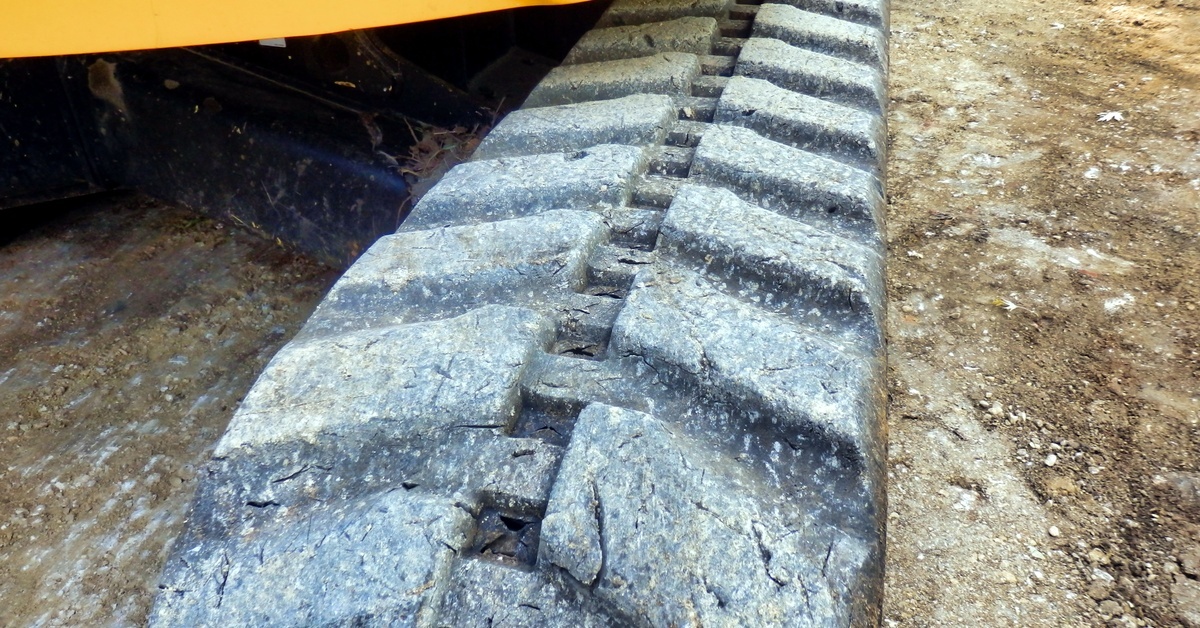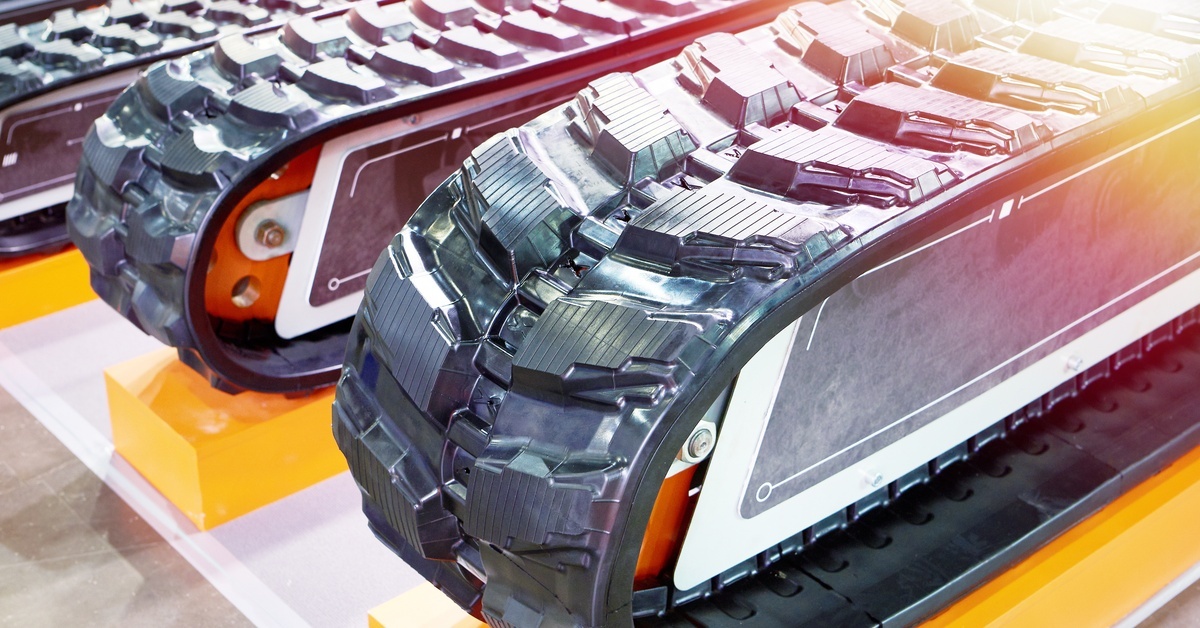The Evolution of Rubber Tracks in Construction Equipment
Jul 31st 2025
Jul 31st 2025
Construction equipment has undergone major transformations over the past century, and rubber tracks represent one of the most notable innovations in machine mobility and performance. These flexible, durable components have revolutionized the operation of heavy machinery across diverse terrains, offering superior traction, reduced ground pressure, and enhanced versatility compared to steel tracks or wheeled systems.
The evolution of rubber tracks in construction equipment, from experimental technology to the industry standard, showcases remarkable engineering advancement. Understanding this evolution helps equipment operators, fleet managers, and construction professionals appreciate the sophisticated benefits of their machines, allowing informed decisions about equipment selection and maintenance.
Construction equipment manufacturers initially relied on steel tracks to provide traction and distribute weight across challenging terrain. The early systems featured interlocking metal plates connected by steel pins, creating a continuous loop around drive sprockets and idler wheels. Steel tracks offered superior durability and could withstand extreme punishment from rocks, debris, and harsh operating conditions.
However, steel tracks presented operational challenges. The metal created excessive noise, making it unsuitable for urban construction projects and residential areas. Equipment operators also experienced substantial vibration and jarring movements. This caused operator fatigue and reduced productivity during extended work periods.
Furthermore, steel tracks can damage surfaces such as asphalt, concrete, and finished pavement. Construction companies faced costly surface repairs and restricted access to many job sites where surface protection was paramount. The weight and rigidity of steel tracks limited machine versatility and increased fuel consumption due to higher rolling resistance.

The development of rubber tracks emerged from the need to address the limitations and drawbacks of steel tracks while maintaining the advantages of continuous track systems. Early rubber track designs incorporated steel cables or fabric reinforcement within rubber compounds, creating flexible yet strong alternatives to traditional steel construction.
Manufacturers discovered that rubber tracks could provide excellent traction while immensely reducing ground pressure compared to wheeled equipment. This breakthrough opened up new possibilities for operating construction equipment in sensitive environments, such as wetlands and areas with weight restrictions. The reduced ground pressure also minimized soil compaction; this was an important consideration for landscaping and agricultural applications.
Rubber tracks eliminated the harsh operating characteristics of steel systems. Equipment operators experienced smooth rides, decreased vibration, and less noise production. Altogether, these changes greatly increased operator comfort and productivity.
The evolution of rubber tracks in construction equipment represents decades of material science advancement and engineering refinement. Contemporary tracks feature multiple layers of specialized rubber compounds. The outer layer provides wear resistance and traction, while the inner layers are flexible and offer structural support.
Tread pattern development has become increasingly sophisticated; manufacturers are creating specialized designs tailored to certain applications. Some patterns excel in muddy conditions, and others withstand hard surfaces or loose materials. The science of tread design continues advancing as manufacturers gather field data and refine their understanding of track-surface interactions.
Rubber tracks have found widespread adoption across numerous construction equipment categories. Compact track loaders represent one of the most successful applications, combining the maneuverability of skid steers with the stability and traction of tracked systems. These machines excel in landscaping, site preparation, and material handling applications where surface protection and versatility are essential.
Excavators ranging from mini-excavators to large construction machines increasingly utilize rubber tracks for urban construction projects. The reduced noise and surface damage make these machines ideal for roadwork, utility installation, and building construction in densely populated areas. Rubber tracks allow excavators to work efficiently on finished surfaces without causing damage or requiring protective matting.
Bulldozers and crawler dozers have adopted rubber tracks for specific applications where traditional steel tracks prove problematic. Rubber-tracked dozers can operate effectively on slopes, in wetlands, and on surfaces that require protection. The improved traction and reduced ground pressure expand the operational envelope for these powerful machines.
Rubber tracks deliver measurable performance advantages that have driven their widespread adoption throughout the construction industry. Traction improvements stem from the rubber compound’s ability to conform to surface irregularities, creating a larger contact area and better grip. This improved traction translates to better productivity, particularly in challenging conditions such as mud, snow, or loose materials.
Fuel efficiency gains result from reduced rolling resistance compared to steel tracks. The flexible rubber construction requires less energy to deform and reform during operation, reducing parasitic losses that drain engine power. Fleet operators report noticeable fuel savings when transitioning from steel to rubber tracks, particularly during extended periods of operation.
Machine stability receives important enhancement from the increased footprint and flexible nature of rubber tracks. The tracks conform to uneven terrain, keeping better contact with the ground surface. Enhanced stability enhances operator confidence, reduces machine stress, and allows for productive operation on challenging terrain that might prove difficult for wheeled equipment.
Proper maintenance practices significantly extend the service life of rubber tracks and optimize performance. Regular inspection schedules help identify wear patterns, damage, and debris accumulation before they become serious problems. Operators should inspect tracks for cuts, punctures, or abnormal wear that may indicate alignment issues or operational problems.
Tension adjustment represents a critical maintenance task that directly impacts track performance and longevity. The correct tension facilitates optimal power transmission and prevents excessive wear on the drive components.
Under-tensioned tracks may slip or come off, while tracks with extreme tension suffer from accelerated wear and increased stress on the machine components.
Cleaning protocols become especially important for rubber tracks operating in abrasive or sticky conditions. Accumulated debris can cause premature wear, affect traction, and create imbalances that stress machine components, ultimately leading to increased wear and tear. Regular cleaning helps maintain peak performance and extends the service life.

Rubber tracks offer important environmental benefits that align with modern construction industry sustainability goals. Reduced ground pressure minimizes soil compaction, protecting sensitive ecosystems and preserving soil structure for future use. This characteristic makes rubber-tracked equipment particularly valuable for environmental restoration projects and work in protected areas.
Surface protection capabilities eliminate the need for protective matting in many applications, reducing material consumption and waste generation. Construction companies can operate rubber-tracked equipment directly on finished surfaces without causing damage, streamlining operations, and reducing environmental impact from manufacturing and disposing of protective materials.
The widespread adoption of rubber tracks has significantly enhanced the capabilities and applications of construction equipment. Machines that once operated exclusively on unpaved surfaces can now work effectively on finished roads, parking lots, and other sensitive areas. This expansion of operational capabilities has created new market opportunities and changed how construction projects are planned and executed.
The rubber track revolution continues influencing equipment design, operational practices, and industry standards. Because of its practical use and cost efficiency, rubber tracks will continue to be the standard for a broad range of construction machines.
Increase the performance and profitability of your machine today with aftermarket rubber tracks from Tractor Zone. Our experts will guide you in making the right selection for all your heavy machinery, making sure you navigate all terrains at peak performance for years to come.